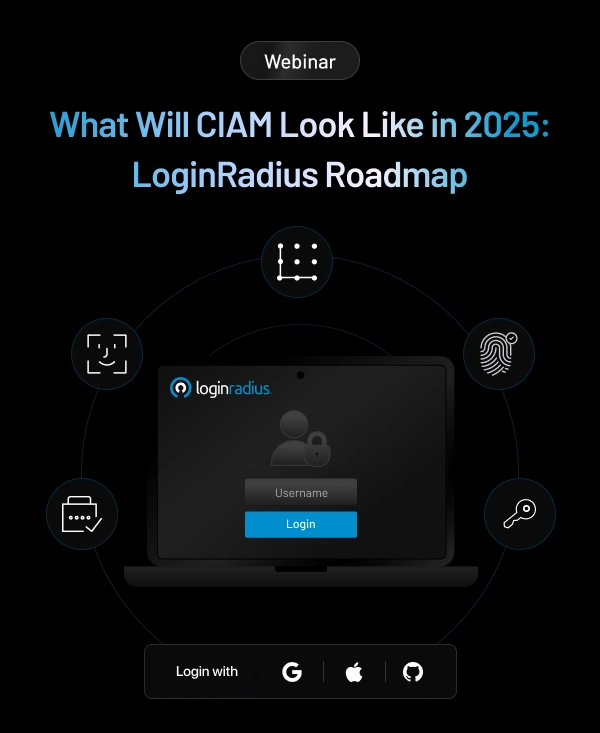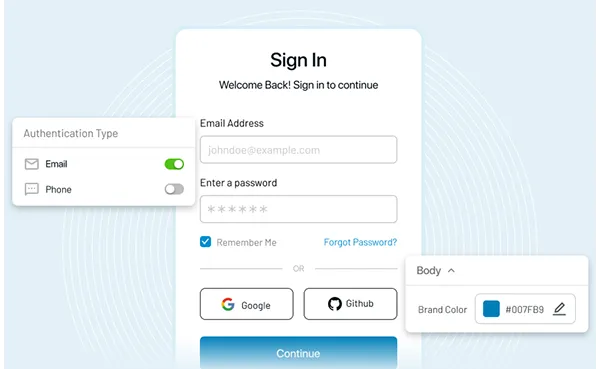Introduction
In today's digital world, the need for secure authentication is more important than ever before. With the rise of cybercrime and data breaches, businesses are constantly pressured to ensure their customers' data is safe and secure.
On the other hand, customers are more aware of how businesses collect, store, and manage their information. And they prefer relying on the ones offering robust customer data security.
And to ensure robust security, more layers are added to the authentication process. And here’s where the real problem arises.
The traditional password-based authentication methods can frustrate customers, leading to poor customer experience (CX) since a bit of friction in the onboarding process could force customers to switch.
And passwordless authentication is emerging as a solution to address these pain points and enhance CX since a seamless customer journey is what every user is looking for.
In a nutshell, traditional password-based authentication methods have several pain points that impact CX. Let’s understand the aspects of leveraging a passwordless authentication system and how it removes hurdles from a customer journey.
A Brief Overview of Passwordless Authentication
A passwordless authentication system swaps using a traditional password with certain factors. These extra-security methods may include a link, fingerprint, PIN, or a secret token delivered via email or text.
Passwordless login eliminates the need to generate passwords altogether. There’s a lot of good in this new-age process for both users and organizations alike.
Since users need not type passwords anymore, it leads to a better screen time experience. While for organizations, it will lead to fewer breaches and support costs.
The use of passwordless authentication in businesses is multifold. For example, you can go passwordless for internal security, online consumers, or combine the two.
A few use cases of passwordless authentication include:
- Sign up for a service, or get a subscription.
- Let consumers log in to their online accounts.
- Make a secure payment online.
Why Won’t Passwords Attract Users in 2023 and Beyond?
- Forgotten passwords: With the increasing number of online accounts, it's common for customers to forget their passwords. This leads to frustration and the need to go through password reset procedures, which can take time and effort.
- Password reuse: Customers often reuse the same password across multiple accounts, leading to security vulnerabilities. If one account is compromised, all accounts using the same password are also at risk.
- Password complexity: Password complexity requirements can lead to frustration for customers. They may need help to create and remember complex passwords, leading to weaker passwords or even password reuse.
- Password-based attacks: Passwords are vulnerable to attacks, such as brute force attacks and phishing scams. These attacks can compromise customer data, leading to a loss of trust in the business.
How Passwordless Authentication Addresses the Pain Points of Customer Experience?
Passwordless authentication is an emerging authentication method that addresses many of the pain points associated with password-based authentication. It offers a range of benefits that enhance CX, including:
1. Improved security
Passwordless authentication methods, such as biometric and one-time passcodes, are more secure than passwords. Biometric authentication uses unique physical characteristics, such as fingerprints or facial recognition, to verify identity, making it more difficult for attackers to access customer data. One-time passcodes are only valid temporarily, reducing the risk of a successful attack.
2. Improved convenience
Passwordless authentication is more convenient for customers. They no longer need to remember complex passwords or reset forgotten passwords. This leads to a smoother authentication process, enhancing customer experience.
3. Reduced friction
Passwordless authentication reduces friction in the customer journey. Customers can quickly and easily authenticate themselves, leading to a smoother experience.
Increased trust
Passwordless authentication can increase customer trust in the business. Customers will trust the business with their data by offering a more secure and convenient authentication method.
To Conclude
Password authentication for CX can be a pain point for businesses and customers alike. However, passwordless authentication solves many pain points associated with traditional password-based authentication methods.
By offering improved security, convenience, reduced friction, and increased trust, passwordless authentication can enhance customer experience, leading to improved customer retention and loyalty. As such, businesses should consider implementing passwordless authentication as part of their overall authentication strategy.

















